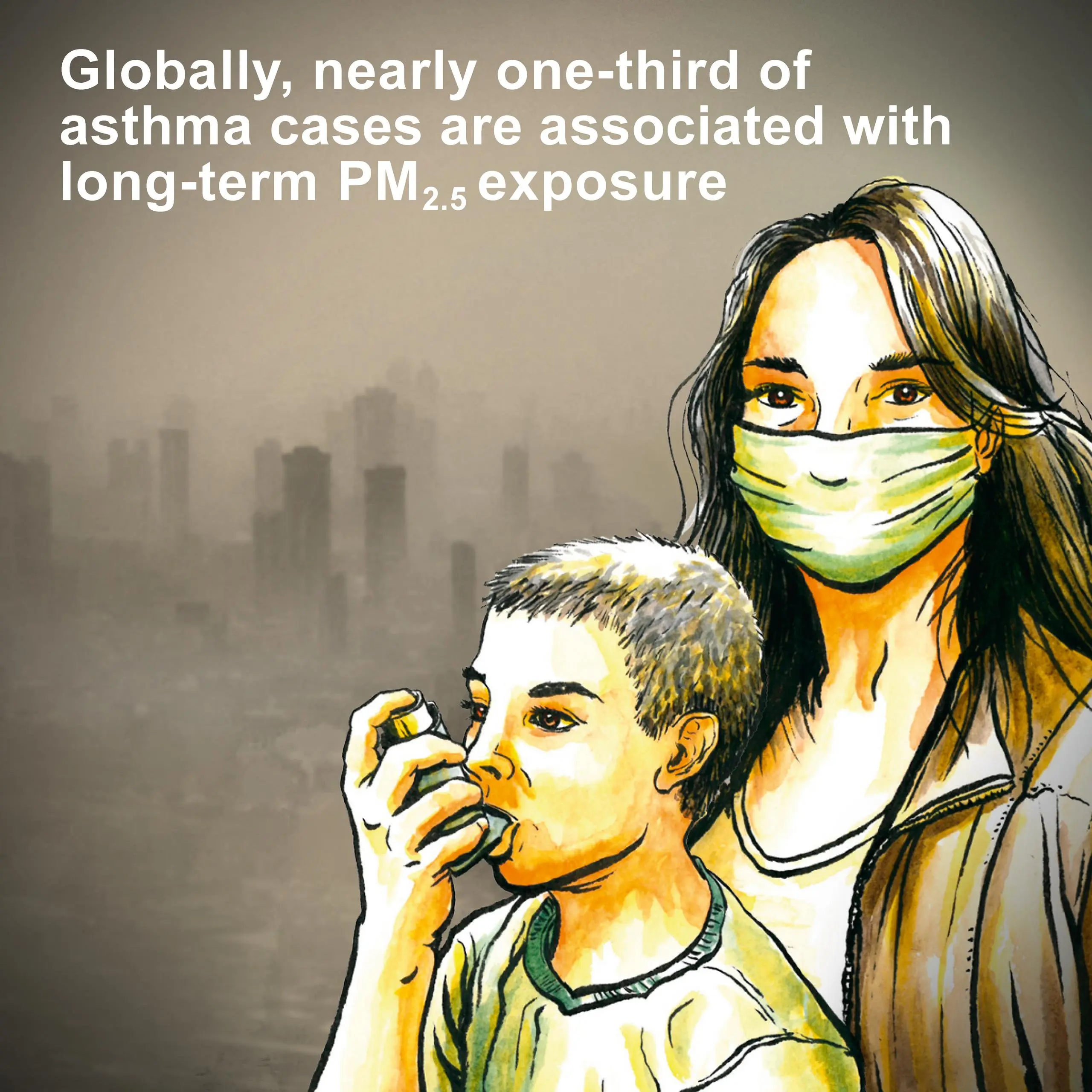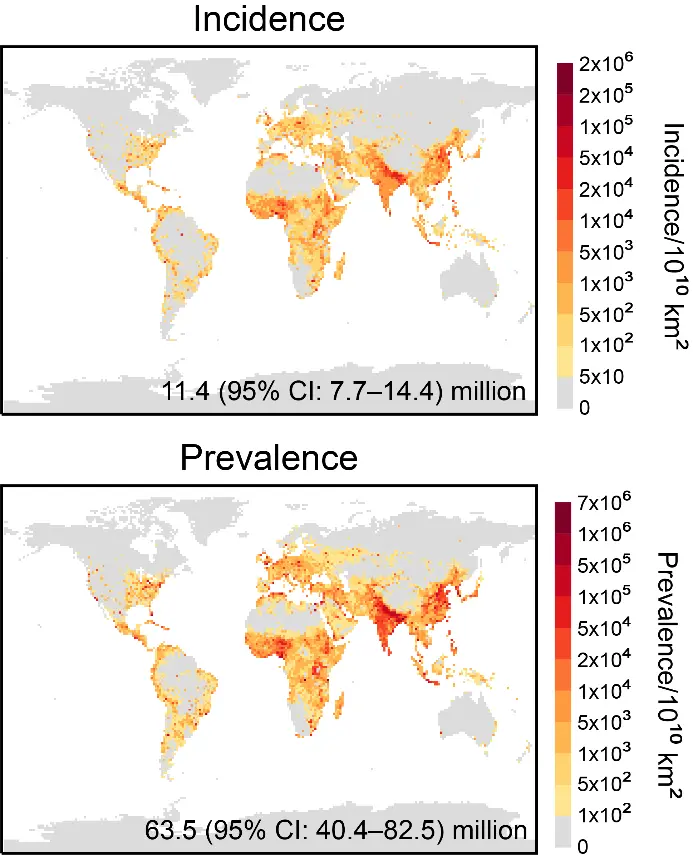

Asthma is currently an incurable disease that severely impairs quality of life, with recurring symptoms such as wheezing, coughing, and shortness of breath. As of today, about 4 percent of the world’s population suffers from asthma, with more than 30 million new cases arising annually. Evidence suggests that long-term exposure to air pollution of fine particulate matter (PM2.5) is an important risk factor for developing asthma. However, inconsistencies in findings from earlier epidemiological studies have left this potential health risk open to debate, as some studies observed an increased risk while others found no association.
To resolve this controversy, Dr. Ruijing Ni, the first author of the study published today in the journal One Earth, and her colleagues at the Max Planck Institute for Chemistry have conducted a comprehensive global meta-analysis with researchers from China, the USA, and Australia. The research team determined the data from 68 epidemiologic studies from 2019 conducted across 22 countries, including those in North America, Western Europe, East Asia, South Asia, and Africa. They conclude that there is now sufficient evidence with high confidence level to support an association between long-term exposure to ambient PM2.5 and asthma.
11 percent of new cases of asthma in Germany are attributable to particulate matter


“We estimate that globally in 2019, almost a third of asthma cases are attributable to long-term PM2.5 exposure, corresponding to 63.5 million existing cases and 11.4 million new cases. In Germany, the pollution may have been responsible for 11 percent of new asthma cases, which corresponds to 28,000 people. We also find that the risk of asthma associated with PM2.5 is much higher in children than in adults, reflecting the age-related vulnerability”, says Dr. Ni.
Typically, the full maturation of lung and immune function is gradually completed until early adulthood. As a result, children may be more susceptible to air pollution exposure, which can lead to airway oxidative stress, inflammation, and hyper-responsiveness, as well as changes in immunological responses and respiratory sensitization to allergens. All these factors play a role in the development of asthma.
Further using these data, the research team established exposure-response curves for both childhood and adult asthma. Such curves are widely employed to quantitatively assess health risks by illustrating the relationship between the level of exposure to a particular substance, e.g., PM2.5 and the magnitude of the effect it produces, e.g., asthma risk. The exposure-response curves were determined by incorporating evidence from countries and regions across various income levels, which capture the global variation in PM2.5 exposure. “This initiative is important for quantifying global health effects of air pollution,” comments Prof. Yuming Guo, an epidemiologist from Monash University.
Countries with different income levels and particulate matter pollution considered
Populations in low- and middle-income countries (LMICs) are typically exposed to higher concentrations of air pollution and bear a greater burden of PM2.5. In contrast, research on the health effects of PM2.5 has been limited in these regions previously, with the majority of studies conducted in North America and Western Europe. Consequently, attempting a global health impact assessment of PM2.5 exposure necessitates extrapolating exposure-response associations observed in high-income countries to LMICs. The approach may introduce large uncertainty due to the differences in air pollution sources, healthcare systems, and demographic characteristics between high-income countries and LMICs.
The inclusion of evidence from several LMICs mitigates the limitation in approach and enables the exposure-response curves to be applicable to assess city- to global-scale attributable burden of asthma, as well as asthma health benefits associated with air pollution reductions, e.g., health benefits obtained from policy-driven reductions in air pollution under different scenarios.
“Our findings highlight the urgent need for policymakers to enforce stringent legislation to continuously combat air pollution, while personal protective measures, such as wearing masks, can also help reduce individual exposure and mitigate the risk of asthma,” emphasizes Prof. Yafang Cheng, the corresponding author of the study and the director at the Max Planck Institute for Chemistry.

